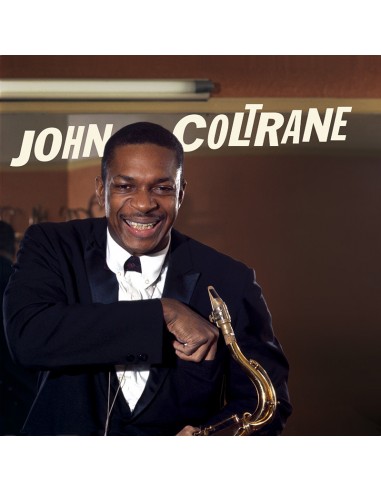Complete Studio Master Takes
John ColtraneJEAN-PIERRE LELOIR COLLECTION
INCLUDES 1 BONUS TRACK
John Coltrane only recorded a few studio sessions as a member of Thelonious Monk’s group. This CD contains all of the master' takes featuring both musicians together, in a formation that also included such masters as Coleman Hawkins, Gigi Gryce, and Art Blakey. Coltrane recorded “Ruby My Dear” backed by the rhythm section only. As a bonus, we have added for comparison the version of the same tune recorded in the same format by Monk with Coleman Hawkins, as well as Coltrane’s version of Monk’s “Bemsha Swing” recorded in a quartet with Don Cherry a few years later.
PERSONNEL:
JOHN COLTRANE, tenor sax
THELONIOUS MONK, piano
On all tracks plus:
ON TRACK [1]: Wilbur Ware (b). New York, April 16, 1957.
ON TRACKS [2-6]: Ray Copeland (tp), Gigi Gryce (as),
Coleman Hawkins (ts), Wilbur Ware (b),Art Blakey (d).
New York, June 26, 1957.
ON TRACKS [7-9]: Wilbur Ware (b), Shadow Wilson (d).
New York, July, 1957.
(*) BONUS TRACKS:
10: Same session as 2-6. Hawkins & rhythm section only.
11: John Coltrane (ts), Don Cherry (tp), Percy Heath (b), Ed Blackwell (d).
New York, July 8, 1960.
TRACKS:
01 MONK’S MOOD
02 ABIDE WITH ME
03 WELL YOU NEEDN’T
04 OFF MINOR
05 EPISTROPHY
06 CREPUSCULE WITH NELLIE
07 NUTTY
08 RUBY MY DEAR
09 TRINKLE TINKLE
10 RUBY MY DEAR [featuring Coleman Hawkins]
11 BEMSHA SWING
Total Time: 71:14
- Format
- CD
- Discs
- 1
- Label code
- 38006
 Cookie preferences
Cookie preferences
















































